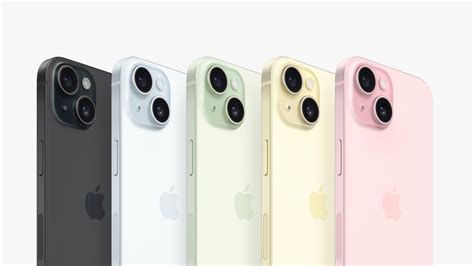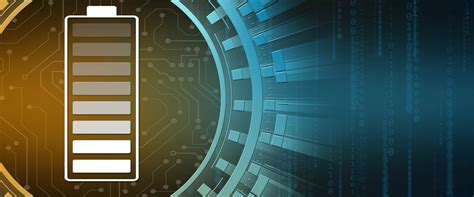
The discounted iPhone 15, initially hailed as a budget-friendly champion, is reportedly triggering buyer’s remorse for some users just two weeks after purchase, primarily due to the allure of the higher-end iPhone 15 Pro models and their advanced features. While the standard iPhone 15 offers significant improvements over previous generations, the gap between it and the Pro versions, particularly in camera capabilities and performance, seems to be fostering regret among some consumers who opted for the more affordable option.
The initial enthusiasm for the iPhone 15, driven by its lower price point and improvements over older models, is now being tempered by the realization that it lacks features found in the iPhone 15 Pro and Pro Max. This has led some users to question their decision, feeling they may have compromised too much for the sake of saving money. According to the original Yahoo Finance article, “Those lured by the discounted price of the iPhone 15 may find themselves regretting the purchase when they consider all the features they’re missing out on.”
The iPhone 15 boasts features like the Dynamic Island, a 48MP Main camera, and the A16 Bionic chip, offering substantial upgrades over previous non-Pro models. However, the Pro models offer even more advanced technology, including a superior camera system with a telephoto lens, the faster A17 Pro chip, a titanium design, and the Action button. These differences, initially overlooked by some buyers, are now becoming a source of dissatisfaction.
One of the primary drivers of this buyer’s remorse is the camera system. The iPhone 15 Pro offers a more versatile and capable camera setup, particularly for photography enthusiasts. The telephoto lens allows for better optical zoom, and the Pro models often have enhanced image processing capabilities. As the Yahoo article highlights, the camera is a key differentiator, stating that “the Pro models really shine when it comes to camera capabilities.” This discrepancy is causing some iPhone 15 buyers to regret not investing in the Pro versions.
Another factor contributing to buyer’s remorse is the performance difference between the A16 Bionic chip in the iPhone 15 and the A17 Pro chip in the iPhone 15 Pro models. While the A16 Bionic is a capable processor, the A17 Pro offers faster performance and improved graphics, making it better suited for demanding tasks like gaming and video editing. Users who frequently engage in these activities may find the iPhone 15’s performance lacking compared to the Pro models.
The design and build quality also play a role in the buyer’s remorse. The iPhone 15 Pro models feature a titanium design, which is both lighter and more durable than the aluminum used in the standard iPhone 15. The Action button, a customizable button that replaces the mute switch, is another feature exclusive to the Pro models. These differences in design and build quality contribute to the perception that the Pro models are a more premium and desirable product.
The phenomenon of buyer’s remorse is not new, and it often occurs when consumers make purchasing decisions based on price alone, without fully considering their needs and preferences. In the case of the iPhone 15, the lower price point may have initially seemed appealing, but the long-term value and satisfaction offered by the Pro models are now becoming apparent to some users.
This situation highlights the importance of carefully evaluating one’s needs and priorities before making a purchase. While the iPhone 15 is a capable and feature-rich smartphone, it may not be the best choice for everyone. Users who prioritize camera quality, performance, and design may find the iPhone 15 Pro models to be a better investment in the long run.
The article further suggests that some consumers may have been swayed by promotional offers and discounts on the iPhone 15, without fully considering the trade-offs involved. These offers can create a sense of urgency and encourage impulsive purchases, leading to buyer’s remorse later on.
Furthermore, the social aspect of owning the latest technology cannot be ignored. The iPhone 15 Pro models are often seen as status symbols, and owning one can provide a sense of prestige and exclusivity. Users who are concerned about keeping up with the latest trends may feel inadequate with the standard iPhone 15, leading to dissatisfaction.
The long-term implications of this buyer’s remorse could include increased trade-in rates for the iPhone 15, as users seek to upgrade to the Pro models. It could also lead to changes in Apple’s marketing strategy, with a greater emphasis on highlighting the differences between the standard and Pro models.
Ultimately, the decision of whether to buy the iPhone 15 or the iPhone 15 Pro models depends on individual needs and preferences. However, the reported buyer’s remorse among some iPhone 15 users serves as a cautionary tale, highlighting the importance of carefully considering all factors before making a purchase.
The iPhone 15 does offer a compelling value proposition for users who are looking for a capable and affordable smartphone. Its improvements over previous non-Pro models are significant, and it offers a great user experience. However, for users who prioritize camera quality, performance, and design, the iPhone 15 Pro models may be a better choice, even at a higher price point.
The current situation also underscores the effectiveness of Apple’s product segmentation strategy. By offering both standard and Pro models, Apple caters to a wider range of consumers, each with different needs and budgets. However, this strategy also creates the potential for buyer’s remorse, as some users may later regret not choosing the more expensive option.
In addition to the features mentioned above, the iPhone 15 Pro models also offer ProMotion technology, which allows for adaptive refresh rates up to 120Hz. This results in smoother scrolling and animations, enhancing the overall user experience. The standard iPhone 15, on the other hand, has a fixed refresh rate of 60Hz.
The iPhone 15 Pro models also have a longer battery life than the standard iPhone 15, which can be a significant advantage for users who rely heavily on their smartphones throughout the day.
Another key difference between the iPhone 15 and the iPhone 15 Pro models is the storage capacity. The Pro models offer higher storage options, which can be important for users who take a lot of photos and videos or who download a lot of apps.
The materials used in the construction of the iPhone 15 Pro models are also more premium than those used in the standard iPhone 15. The titanium design of the Pro models not only looks and feels more luxurious but is also more durable and resistant to scratches and dents.
Furthermore, the iPhone 15 Pro models have a more advanced cooling system than the standard iPhone 15, which helps to prevent overheating during demanding tasks. This can result in better sustained performance over longer periods.
The iPhone 15 Pro models also have a brighter display than the standard iPhone 15, which makes them easier to see in direct sunlight.
Finally, the iPhone 15 Pro models have a more advanced audio system than the standard iPhone 15, which results in better sound quality for music, videos, and phone calls.
The buyer’s remorse experienced by some iPhone 15 users is a reminder that price is not the only factor to consider when making a purchase. It is important to carefully evaluate one’s needs and priorities and to choose the product that best meets those needs, even if it means spending a little more money.
The iPhone 15 is still a great phone for many people, and its lower price point makes it a more accessible option for those on a budget. However, for users who demand the best possible camera, performance, and design, the iPhone 15 Pro models are worth the extra investment.
Apple’s ecosystem and brand loyalty play a significant role in these purchase decisions. Many users are already invested in the Apple ecosystem, with services like iCloud, Apple Music, and the App Store. This makes it more convenient to stick with Apple products, even if there are compelling alternatives from other manufacturers.
Brand loyalty also plays a role, as many users have a strong affinity for the Apple brand and are willing to pay a premium for its products. This loyalty can be based on a variety of factors, including design, user experience, and perceived quality.
The marketing and advertising strategies employed by Apple also contribute to the desirability of its products. Apple’s marketing campaigns are often focused on highlighting the innovative features and benefits of its products, creating a sense of excitement and anticipation among consumers.
The availability of financing options and trade-in programs also makes it easier for consumers to afford the latest iPhones. These programs allow users to spread the cost of the device over time or to reduce the upfront cost by trading in their old phones.
The resale value of iPhones is also relatively high, which can make them a more attractive investment than other smartphones. This is because iPhones tend to hold their value better over time, allowing users to recoup a significant portion of their initial investment when they upgrade to a new model.
The user experience offered by iPhones is also a key factor in their popularity. iOS is known for its simplicity, ease of use, and stability. This makes it a more appealing operating system for many users, especially those who are not technically savvy.
The security and privacy features offered by iPhones are also a major selling point for many consumers. Apple has a strong reputation for protecting user data and privacy, which is becoming increasingly important in today’s digital age.
The availability of accessories and apps for iPhones is also a major advantage. There is a vast ecosystem of accessories and apps available for iPhones, allowing users to customize their devices and extend their functionality.
The support and service offered by Apple are also highly regarded. Apple provides excellent customer support, both online and in-store, and its Genius Bar service is available to help users with any technical issues they may encounter.
The perceived status and prestige associated with owning an iPhone also contribute to its popularity. iPhones are often seen as status symbols, and owning one can provide a sense of prestige and exclusivity.
The competition in the smartphone market is intense, with manufacturers constantly innovating and introducing new features and technologies. This competition benefits consumers by driving down prices and improving the quality of smartphones.
However, the constant innovation and marketing can also create confusion and buyer’s remorse, as consumers may feel pressured to upgrade to the latest models, even if their current phones are still perfectly functional.
The environmental impact of smartphone manufacturing and disposal is also a growing concern. Smartphones contain valuable materials, such as gold, silver, and copper, which can be recycled. However, many smartphones end up in landfills, where they can release harmful toxins into the environment.
Apple has made efforts to reduce its environmental impact, such as using recycled materials in its products and offering trade-in programs to recycle old iPhones. However, more needs to be done to address the environmental challenges associated with smartphone manufacturing and disposal.
The social impact of smartphones is also a complex issue. Smartphones have transformed the way we communicate, work, and access information. However, they have also contributed to social isolation, addiction, and cyberbullying.
It is important to use smartphones responsibly and to be mindful of their potential impact on our mental and physical health.
The future of smartphones is likely to be characterized by further innovation and integration with other technologies, such as artificial intelligence, augmented reality, and virtual reality.
These technologies have the potential to transform the way we interact with our smartphones and with the world around us.
However, it is also important to consider the ethical and social implications of these technologies and to ensure that they are used in a way that benefits society as a whole.
The buyer’s remorse surrounding the iPhone 15 compared to its Pro counterparts underscores a broader consumer behavior trend: the tension between immediate cost savings and long-term satisfaction. While the iPhone 15 presents itself as a more accessible entry point into Apple’s latest generation of smartphones, the features and performance gap compared to the Pro models appears to be significant enough to trigger second thoughts for some users. This highlights the importance of conducting thorough research, considering individual needs and priorities, and resisting the allure of short-term discounts when making significant technology purchases. Frequently Asked Questions (FAQ):
1. Why are some iPhone 15 buyers experiencing buyer’s remorse?
- Some iPhone 15 buyers are experiencing buyer’s remorse because they feel they compromised too much by not purchasing the iPhone 15 Pro or Pro Max. These users are realizing that they value the advanced features of the Pro models, such as the superior camera system (with a telephoto lens and enhanced image processing), the faster A17 Pro chip, the titanium design, and the Action button, more than the money they saved by opting for the standard iPhone 15. According to the Yahoo Finance article, “Those lured by the discounted price of the iPhone 15 may find themselves regretting the purchase when they consider all the features they’re missing out on.”
2. What are the key differences between the iPhone 15 and the iPhone 15 Pro models that are causing this remorse?
- The key differences causing remorse include the camera system, processor, design, and additional features. The iPhone 15 Pro models feature a more advanced camera system with a telephoto lens for better zoom capabilities and enhanced image processing. They are powered by the faster A17 Pro chip, offering better performance, especially for demanding tasks. The Pro models also boast a titanium design, which is lighter and more durable than the aluminum used in the standard iPhone 15, and they include the Action button, a customizable button that replaces the mute switch. The Pro models also have ProMotion technology with adaptive refresh rates up to 120Hz, longer battery life, higher storage options, a brighter display, and a more advanced audio system.
3. Is the iPhone 15 a bad phone?
- No, the iPhone 15 is not a bad phone. It offers significant improvements over previous non-Pro models, including the Dynamic Island, a 48MP Main camera, and the A16 Bionic chip. It provides a great user experience and is a capable and affordable smartphone. However, it may not be the best choice for users who prioritize camera quality, performance, and design above all else.
4. What can consumers do to avoid buyer’s remorse when purchasing a new smartphone?
- To avoid buyer’s remorse, consumers should carefully evaluate their needs and priorities before making a purchase. They should research the different models available, compare their features and specifications, and consider their budget. It is also important to resist the urge to make impulsive purchases based on promotional offers or discounts. Reading reviews and consulting with experts can also help consumers make informed decisions.
5. What are the potential long-term consequences of this buyer’s remorse for Apple and consumers?
- The long-term consequences could include increased trade-in rates for the iPhone 15, as users seek to upgrade to the Pro models. This could impact Apple’s sales of new devices and increase the volume of used iPhones in the market. It could also lead to changes in Apple’s marketing strategy, with a greater emphasis on highlighting the differences between the standard and Pro models to better inform consumers. For consumers, it underscores the importance of careful consideration and research before making significant purchases, highlighting the trade-offs between price and features.









